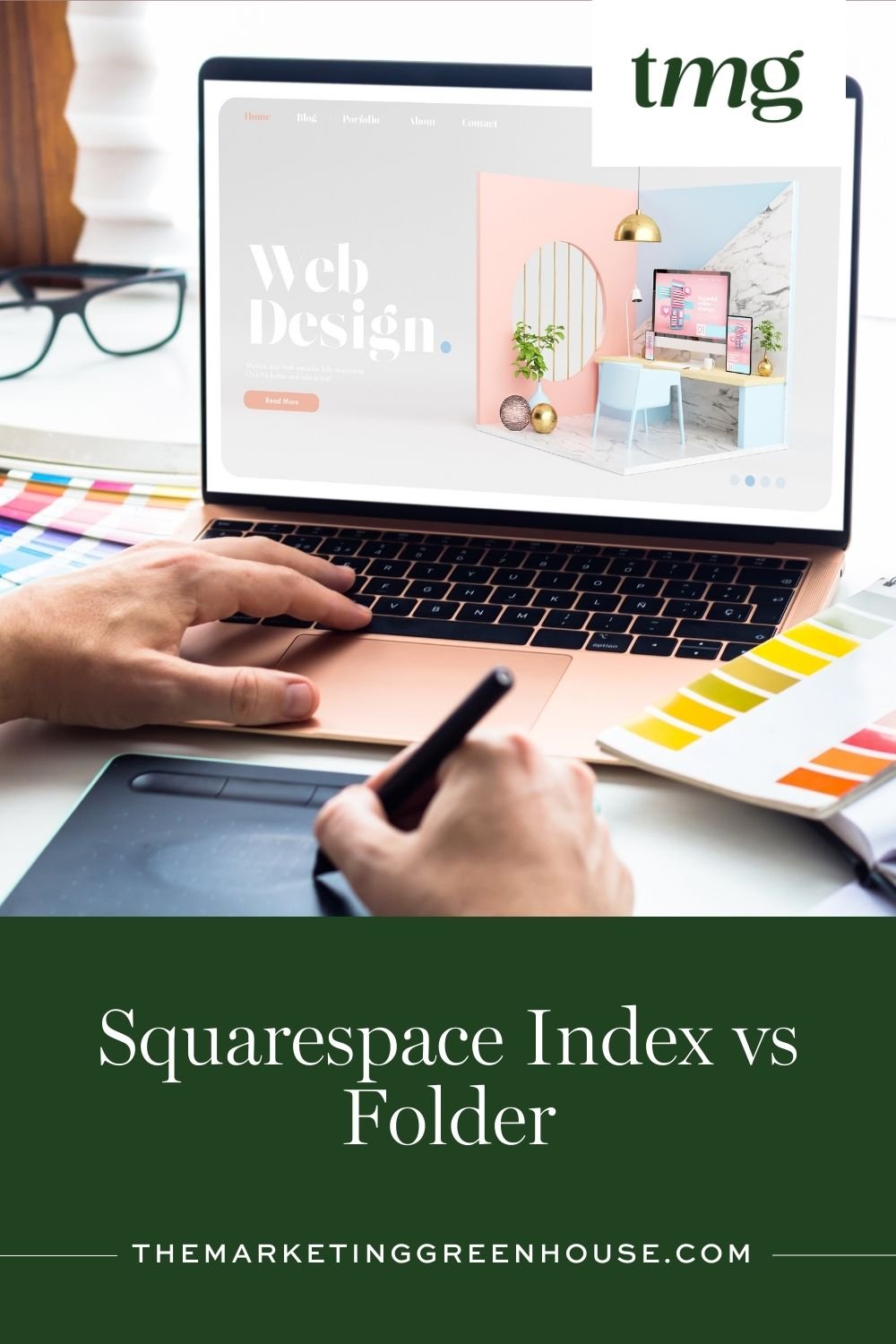Squarespace Index vs Folder
Squarespace provides a user-friendly platform for creating beautiful and functional websites. However, when it comes to organizing your site's content, there are two options: Index pages and folders. Both serve as a way to group and organize your site's pages, but they have different functions and purposes. In this blog post, we will explore the differences between Squarespace index and folder, their pros and cons, and which one is the best fit for your website.
What is a Squarespace Index Page?
An index page in Squarespace is a page that displays a collection of other pages within your website. It acts as a hub or table of contents for your site's content, allowing visitors to navigate to specific pages without having to go through the main navigation menu. Index pages can be created in any Squarespace template and can include various sections such as text, images, videos, and links.
What is a Squarespace Folder?
A folder in Squarespace is a way to group related pages into a sub-menu within your main navigation. This allows you to organize your content in a hierarchical structure, making it easier for visitors to navigate through your site. Folders are typically used to categorize blog posts, products, or separate pages of your site.
Pros and Cons of Squarespace Index and Folder
Before deciding which option is the best for your website, it's essential to understand the pros and cons of both Squarespace index and folder. Let's take a closer look at each one.
Squarespace Index Page Pros
1. Easy to create and update: Index pages can be created and edited easily through Squarespace's drag and drop interface. This makes it a great option for those who are new to website building or have limited technical skills.
2. User-friendly navigation: Index pages provide a user-friendly way to navigate through your site's content. Visitors can easily find what they're looking for without having to go through the main navigation menu.
3. Great for long scrolling pages: If you have a lot of content on one page, such as a portfolio or a collection of blog posts, an index page is a great way to organize and display it in a visually appealing manner. It's also an excellent option for mobile users, as they can simply scroll through the page instead of clicking through multiple pages.
4. Can be customized: With Squarespace's various templates and design options, you can customize your index page to match the overall aesthetic of your website. You can add background colors, banner images, and other design elements to make it stand out.
Squarespace Index Page Cons
1. Limited design options: While index pages can be customized to some extent, they are still limited compared to regular pages. For example, you cannot add custom code or change the layout of the page.
2. Can be confusing for visitors: If your index page is not well-organized or labeled clearly, it can confuse visitors and make it difficult for them to find what they're looking for.
3. Limited SEO options: Index pages have limited SEO options, which means they may not rank as high on search engines as regular pages.
Squarespace Folder Pros
1. Great for organizing content: Folders are a fantastic way to organize your site's content into categories. This makes it easier for visitors to find what they're looking for, especially if you have a lot of pages on your site.
2. More design options: Unlike index pages, folders can be customized with custom code, making it easier to create a unique look and feel for your site's navigation.
3. Better for SEO: Folders can have their own URL slug, making it easier for search engines to index and rank your site's content.
Squarespace Folder Cons
1. Steeper learning curve: Creating and organizing folders may require a bit more technical knowledge, making it less user-friendly for those who are new to website building.
2. Limited to the main navigation menu: Unlike index pages, folders are limited to the main navigation menu. This means that visitors will have to go through the dropdown menu to access its content, which may not be as user-friendly as index pages.
3. Limited to one template family: Folders are limited to the template family that you have chosen for your site. This means that if you want to use a different template, you will have to create a new folder.
Choosing Between Squarespace Index and Folder: Which One is Right for You?
Now that we've explored the pros and cons of Squarespace index and folder, it's time to decide which one is the best fit for your website. The truth is, there is no right or wrong answer, and it ultimately depends on your website's needs and goals. Here are some questions to consider when making your decision:
1. What type of content do you have on your website? If you have a lot of pages or blog posts, a folder may be a better option for organizing them. However, if you have a long scrolling page or multiple pages under one category, an index page may be a better fit.
2. How important is SEO to your website? If you want your content to rank high on search engines, a folder may be a better option as it allows for better optimization. However, if SEO is not a priority for your website, an index page may work just fine.
3. How comfortable are you with technical aspects of website building? If you have limited technical skills, an index page may be a better option as it is easier to create and update. However, if you have a good understanding of coding and want more design flexibility, a folder may be the way to go.
4. What is the overall aesthetic of your website? Consider the design and layout of your site when deciding between Squarespace index and folder. If you want to maintain a clean and minimalistic look, an index page may be a better option. However, if you want to add more design elements and customize your navigation, a folder may be a better fit.
Tips for Using Squarespace Index and Folder Effectively
Regardless of which option you choose, here are some tips for using Squarespace index and folder effectively:
1. Keep it organized: Make sure your index page or folder is well-organized and labeled clearly to avoid confusion for visitors.
2. Use preview images: Use preview images for each page or post on your index page or folder to make it more visually appealing and easier to navigate.
3. Utilize Squarespace's help center: If you're new to Squarespace, take advantage of their help center and courses to learn more about creating effective index pages and folders.
4. Use custom code: If you want to add more design elements to your index page or folder, use custom CSS code to make it stand out.
5. Test and preview: Before publishing your index page or folder, make sure to test and preview it on different devices to ensure it looks good and functions properly.
In conclusion, both Squarespace index and folder have their own strengths and weaknesses. It's essential to consider your website's needs and goals before deciding which one is the best fit. Keep in mind that you can always use a combination of both options to create a seamless and user-friendly site navigation. And if you're interested in trying out Squarespace, consider using an affiliate link from a trusted source, such as Paige Brunton, to support their work and receive a discount on your new Squarespace site.
We hope this blog post has helped you understand the differences between Squarespace index and folder and how to use them effectively for your website. Whichever option you choose, remember to keep your site organized, visually appealing, and user-friendly for the best user experience. Happy website building!

